MGA! Tech Talk – March/April 2018
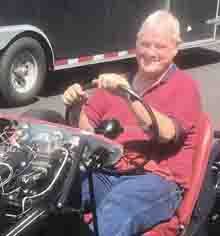
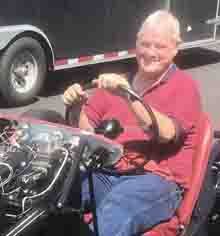 NAMGAR’s annual Get-Togethers always feature a wide variety of technical sessions. It’s a great opportunity to learn from the experts.
NAMGAR’s annual Get-Togethers always feature a wide variety of technical sessions. It’s a great opportunity to learn from the experts.
The Tech Sessions scheduled for GT-43 will continue with that great tradition and I am proud to introduce our presenters and encourage everyone to consider attending in June. Tech Sessions are free to all registered attendees. (I’ve also tried to share a tidbit of information from each of the presenters so that there is actually technical information in this article!)
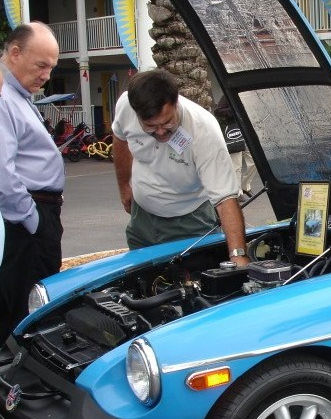 “The Restoration Process of your MGA” will be presented by Glenn Lenhard of Glenn’s MG. Whether you are preparing to buy a British sports car for the first time or planning on resurrecting a family heirloom from storage, Glenn will show you how to get up to date with your car’s condition using his comprehensive three-page inspection. Glenn will further explain a path to completing the restoration to the level you desire.
“The Restoration Process of your MGA” will be presented by Glenn Lenhard of Glenn’s MG. Whether you are preparing to buy a British sports car for the first time or planning on resurrecting a family heirloom from storage, Glenn will show you how to get up to date with your car’s condition using his comprehensive three-page inspection. Glenn will further explain a path to completing the restoration to the level you desire.
Dustless Blasting is a relatively new process that GT attendees will have the opportunity to learn more about during a visit to a nearby facility. This modern approach to paint stripping works by mixing water and an abrasive inside of a blast tank. There is no risk of warping because the water keeps the metal cool. It also uses less abrasive media to work since it is not lost to the air. Dustless blasting leaves a paint ready surface with a corrosion inhibitor that is good for 72 hours.
Powder Coating is an alternative to paint on some components of your car. Powder Coating is a method of applying a protective finish to virtually any type of metal. The powder used in the process is a mixture of finely ground particles of pigment and resin, which is electrostatically dusted onto the surface of the parts to be coated. Flowing from a special powder-coating gun, the charged powder particles adhere to the electrically grounded surfaces. The part then goes into a curing oven until the powder is heated and fused into a smooth coating. The result is a uniform, durable, high quality finish, making it an ideal choice for frame and chassis components. A visit to Hanover Powder Coating will offer GT attendees a first-hand look at the process and decide if it’s right for their restoration!
Lighting and Electrical Upgrades are worthy of consideration when restoring an MG to make it safer in modern traffic. I will be hosting a tech session that explores many of the lighting and electrical upgrade options.
One example is LED lighting. If using any LED bulbs, battery polarity will need to be predetermined. Converting to negative ground makes options for LED technology much easier. And if using LEDs for turn signals, an electronic flasher unit will need to be used in place of the original flasher since there is virtually no amperage draw to heat up the bi-metallic strip in a conventional flasher. Unfortunately, there is no modern 3 prong flasher that outwardly resembles the original Lucas unit. Here is a relatively simple way to mask your modern upgrade.
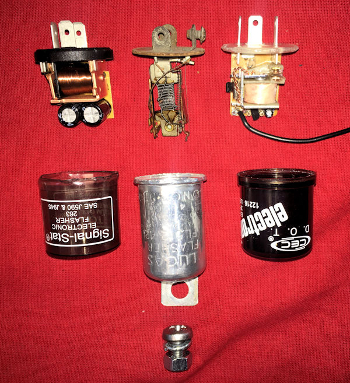 If you have an original Lucas FL512 flasher, carefully pry open the flange around the base of the outer canister. Slide the old flasher unit out. If the casing has any minor dents, secure a socket of similar diameter in a vise and slide the canister over the socket. Working with a wooden insulator to prevent the aluminum from stretching, (I used a paint stirrer) gently hammer the dented area to repair the damage. Clean and polish as desired. I used fine steel wool to replicate the original brushed finish.
If you have an original Lucas FL512 flasher, carefully pry open the flange around the base of the outer canister. Slide the old flasher unit out. If the casing has any minor dents, secure a socket of similar diameter in a vise and slide the canister over the socket. Working with a wooden insulator to prevent the aluminum from stretching, (I used a paint stirrer) gently hammer the dented area to repair the damage. Clean and polish as desired. I used fine steel wool to replicate the original brushed finish.
Upon examining several brands of electronic flasher, I found some were too large in diameter to fit into the Lucas casing. I eventually chose a unit manufactured by CEC (Moss #141- 668), which interestingly required a dedicated ground. To complete the conversion, drill a small hole in the rear of the Lucas canister, feed the ground wire through, and fit a ring terminal to blend with the other ground wires, which terminate at the flasher mounting screw. Then carefully fit the electronic unit inside the Lucas canister, ensuring that none of the internal parts short against the aluminum body. Bend the flange around the base of the flasher to secure. I also tapped the preexisting holes in each terminal and fitted screws to match the original.
 Upholstery and installation tips are always welcome, especially when presented by Kelvin Dodd of Moss Motors! “When Moss Motors started their upholstery program many years ago, original samples were used to make the patterns. At that time, it was understood that owners who wanted to redo their own upholstery would study their old, worn coverings to understand how the new ones should be installed. Times have changed, and many cars no longer have original components, so automotive archeology is required to document how they were built and installed. From this research a set of installation instructions can be made, so owners in the future will be able to duplicate the original factory methods or choose more modern cost-effective alternatives.”
Upholstery and installation tips are always welcome, especially when presented by Kelvin Dodd of Moss Motors! “When Moss Motors started their upholstery program many years ago, original samples were used to make the patterns. At that time, it was understood that owners who wanted to redo their own upholstery would study their old, worn coverings to understand how the new ones should be installed. Times have changed, and many cars no longer have original components, so automotive archeology is required to document how they were built and installed. From this research a set of installation instructions can be made, so owners in the future will be able to duplicate the original factory methods or choose more modern cost-effective alternatives.”
NAMGAR Members will have a great opportunity during this tech session to learn as well as offer input on the how to obtain an award-winning interior!
 The REAL information on proper fuel and oil products for the MGA and Magnette is hard to determine with so many conflicting opinions. We will have the rare opportunity to hear from someone who truly understands his products. Lake Speed, Jr. will offer a presentation on what truly are the best-suited oils, fuels, and coolant products for our cars. One of the most talked about concerns in our engine oil is ZDDP, which remains an uncertainty for most. Lake’s thoughts on that are as follows:
The REAL information on proper fuel and oil products for the MGA and Magnette is hard to determine with so many conflicting opinions. We will have the rare opportunity to hear from someone who truly understands his products. Lake Speed, Jr. will offer a presentation on what truly are the best-suited oils, fuels, and coolant products for our cars. One of the most talked about concerns in our engine oil is ZDDP, which remains an uncertainty for most. Lake’s thoughts on that are as follows:
“Is more ZDDP always better?
Nope, it’s a balance. The whole thing about all of this is balance, which strikes against the whole racer mentality of ‘a little is good, so more must be better.’ That’s not the case with oil — more oil pressure is not better, more oil flow is not better, too little flow is not good, too little pressure is not good. Same with viscosity, it has to be just right.
Most oil conversations start at the wrong point, by talking about oil. We do not make engines to put oil into; we make oil to put into engines. So, the starting point of every oil discussion should not be the oil; it should be the engine — it’s motor oil, not an oil motor. Someone will say that a certain oil is better because it’s got this and this and this and this — no, no, no. Understand the application first. It could be a 289 in a classic car, or a 289 in a track car. Same engine, same components, different application, and you’re going to get two different oils.
Understand your application first — do I have a flat-tappet cam, am I running ethanol, etc.? Then select a product that has the right viscosity, the right chemical characteristics for the application, then pick the brands you trust to deliver all of these things. People typically start in the opposite direction — they’ll start with the brand and then they try to find the best oil that brand offers, and then shoehorn it into their application. And then you try to justify your rationale for doing so.”
Excellent advice from Lake. We’ll pin him down at GT-43 to find out what’s just the right combination for our engines.
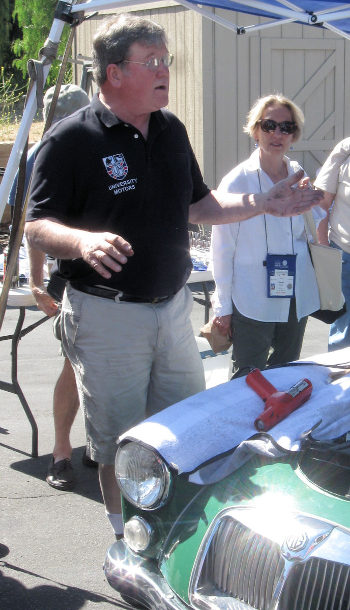 The Rolling Tech Session by John Twist will surely be a favorite at GT-43. For those not familiar, this is your opportunity to have one of the most knowledgeable MG experts in the world look at your car and identify any issue that may have you stumped. It’s not uncommon for John to spend an entire afternoon sorting out a parade of MGs. While Twist won’t have time to replace your clutch, he will perform minor repairs as time permits. To be prepared, be sure to write what your concern is and when the symptoms first occurred, plus any attempts to solve the issue. This will help John better solve your problem, and keep the line of cars moving!
The Rolling Tech Session by John Twist will surely be a favorite at GT-43. For those not familiar, this is your opportunity to have one of the most knowledgeable MG experts in the world look at your car and identify any issue that may have you stumped. It’s not uncommon for John to spend an entire afternoon sorting out a parade of MGs. While Twist won’t have time to replace your clutch, he will perform minor repairs as time permits. To be prepared, be sure to write what your concern is and when the symptoms first occurred, plus any attempts to solve the issue. This will help John better solve your problem, and keep the line of cars moving!
For example, maybe your concern is that your accelerator cable sticks. You’ve already replaced the old cable and the new one worked great at first, but soon became sticky like the previous cable. You replaced all the throttle return springs and it still hangs up. You even noticed that the new cable housing appears to have gotten hot enough to begin to discolor and partially melt the vinyl wrap on the outer cable! You also report that the problem started not long after a new clutch was installed. Give this information to John and he will quickly determine that you have an issue with your ground strap on the left/front engine mount! The strap was either left off or installed improperly during your recent clutch job, resulting in the accelerator cable trying to do the job of a ground cable!
“Detailing your Car for Show Day” will be presented by Joel Dryden of Flawless Finish. Joel will tell GT-43 attendees the latest on how to properly wash and dry a show car.
“Remember when you were younger and used to get out an old bath towel to dry your car? Believe it or not there is a lot of technology that goes into correctly drying your car now without scratching it or worrying about what that water leaves behind on your car’s paint! ”
If your paint needs a little more help, Joel will also give tips on buffing and waxing, including proper use of foam pads and power tools. Understanding the technology associated with modern paint will help you to get a premier shine for show day!
GT-43 attendees will certainly have a lot of opportunities to learn more about a wide variety of topics for their cars. I sincerely hope you can attend. And if not, we will make any recorded presentations available on the NAMGAR website after the GT.
Safety Fast!

